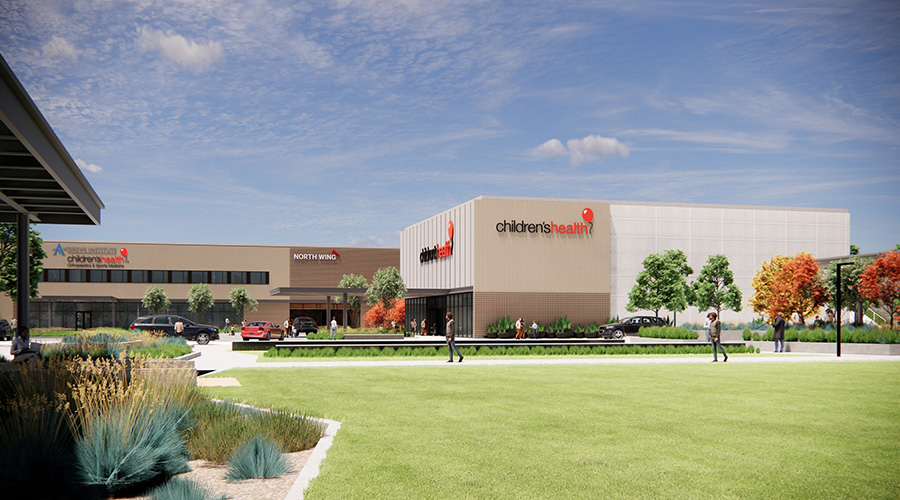When most of us think of "hospital food," we think meatloaf and Jell-O — basically bland, tasteless, and not particularly healthy. Traditionally, the hospital was someplace where you had to eat, not a place where you would choose to eat. And the cafeteria was mainly a place for time-challenged staff and distracted guests to eat quickly and inexpensively.
Factors such as a general uptick in health conscious consumers have put food service on the front burner. Patient satisfaction scores and readmission rates are now much more important to vital reimbursements and in generating hospital revenue. Food service operators are being pressured to meet higher nutritional standards to help keep patients heathier and reduce the risk of readmission, as well as offer great tasting food that can help leave patients and guests with a more positive overall experience.
Complicating consumer demand for more nutritious dining options, shifts in the economy have turned up the heat on healthcare facilities. Rising food costs and budget cuts continue to squeeze the bottom line. Department directors are being challenged to find new revenue sources and to increase retail operations to off-set the cuts while still keeping food affordable. More and more, they require partners who can help them meet the demands for better dining options.
Trends on the menu
The most savvy food service directors are combating these growing pressures by turning them into exciting opportunities to transform their traditional food service models. Taking cues from their retail counterparts, they are embracing new trends that include expanded menu options; authentic foods from other cultures; healthier and sustainable food programs; use of local sourcing; food education and special events; community outreach, and more.
These trends are leveraging the significant value food service can add to patient satisfaction and the bottom line while banishing the stereotype of blah and bland hospital food for good. Popular trends in the healthcare food service industry today include:
Cafeteria to café
To increase retail revenues, attract more patients and outside customers, and improve eating conditions for caregivers, many hospitals are turning the cafeteria into a more modern bistro with gourmet made-to-order and on-demand dishes; healthier options from locally-grown ingredients; and innovative amenities such as coffee kiosks, espresso bars, and food carts.
Production managers to executive chefs
While many satisfaction surveys do not specifically ask about the food, culinary experience definitely affects patient satisfaction. Hiring executive chefs to run the new café-style operations allows hospitals to meet today’s more stringent nutritional requirements while providing great tasting, high quality food. With a trained chef in place, hospitals are ditching the fried, processed, and unhealthy foods and applying a nutritious and delicious “cooking from fresh” mentality. Chefs are instrumental in creating healthier, more innovative, and better tasting gourmet-like menus that improve satisfaction survey scores and make the hospital a true dining destination for the greater community.
Hospital food to room service
More and more hospitals are adopting hotel-style room service that allows patients to order their meals anytime from an expanded menu. Patients order what they want, when they want it, reducing waste and saving hospitals thousands of dollars a year. At the same time, better quality increases revenue reimbursements by improving the hospital’s image and satisfaction survey ratings.
Focus on nutrition
More healthcare facilities have committed to improving the nutritional profile of food they serve to patients, guests, and staff as part of an overall strategy to show nutrition can come with delicious tasting food, while meeting new standards on health. Food service directors understand that better nutrition inside their walls not only sets a good example, but can also lower costs through improved patient outcomes and reduced readmissions. Nutrition education is also part of discharge planning.
Home grown and local food sourcing
With the focus on improved nutrition, healthcare institutions are looking to take advantage of affordable, fresh ingredients. While some are even setting up gardens to grow their own produce, others are buying locally grown products because they tend to be fresher, more nutritious, and boost the local economy. Some facilities are even inviting local farmers in to sell produce in their parking lots and lobbies to help educate patients and guests on nutrition, sustainability, and environmental stewardship.
Food education and community outreach
As mentioned, undrer the ACA hospitals are penalized for patient readmissions. By providing healthier food options during the patient stay, food service directors are helping the hospital avoid these penalties. Going a step further, some facilities are offering food and nutrition education and healthy cooking classes to patients as well as the local community to help even more. The goal is to teach people how to develop better eating habits that help them remain healthier, reduce risks from such things as obesity, malnutrition, heart disease, and diabetes, and ultimately stay out of the hospital.
Hospitals are also promoting new food offerings for the community such as senior dining and after church programs. By creating such events that draw people from the community into the hospital to eat at discounted prices, the hospital can help the area’s economy, serve nutritious food to at-risk groups, and generate extra revenue during times when normal food service volume is low and staff underutilized
Consult an expert
Implementing these trends can be time and resource intensive for hospitals and their staff, as well as challenging. To minimize confusion, waste, and risk during the transition, it is best to work with a food service consultant such as ABM Healthcare Support Services who can not only give expert advice but also provide innovative ways to help design and implement these changes. As experts in food and nutrition services, the right partner will have the experience and people to assess a hospital’s needs and goals and be able to customize a plan that provides the maximum value with the least amount of disruption for patients, staff, and guests. By letting the experts handle food service, hospitals can remain focused on their core competency – providing the best possible care to patients.
Michael V. Tolliver is the Vice President of Operations & Strategic Accounts at ABM Healthcare.

 Spaces That Support: Patient-Centered Design for Modern Reproductive Health
Spaces That Support: Patient-Centered Design for Modern Reproductive Health Modernization of Buildings Require Collaboration Across All Disciplines
Modernization of Buildings Require Collaboration Across All Disciplines Children's Health Announces Plans for RedBird Specialty Center in Texas
Children's Health Announces Plans for RedBird Specialty Center in Texas How Can Healthcare Facilities Use Efficiency to Drive Climate and Health Goals?
How Can Healthcare Facilities Use Efficiency to Drive Climate and Health Goals? El Camino Health Rehabilitation Hospital Officially Tops Out
El Camino Health Rehabilitation Hospital Officially Tops Out